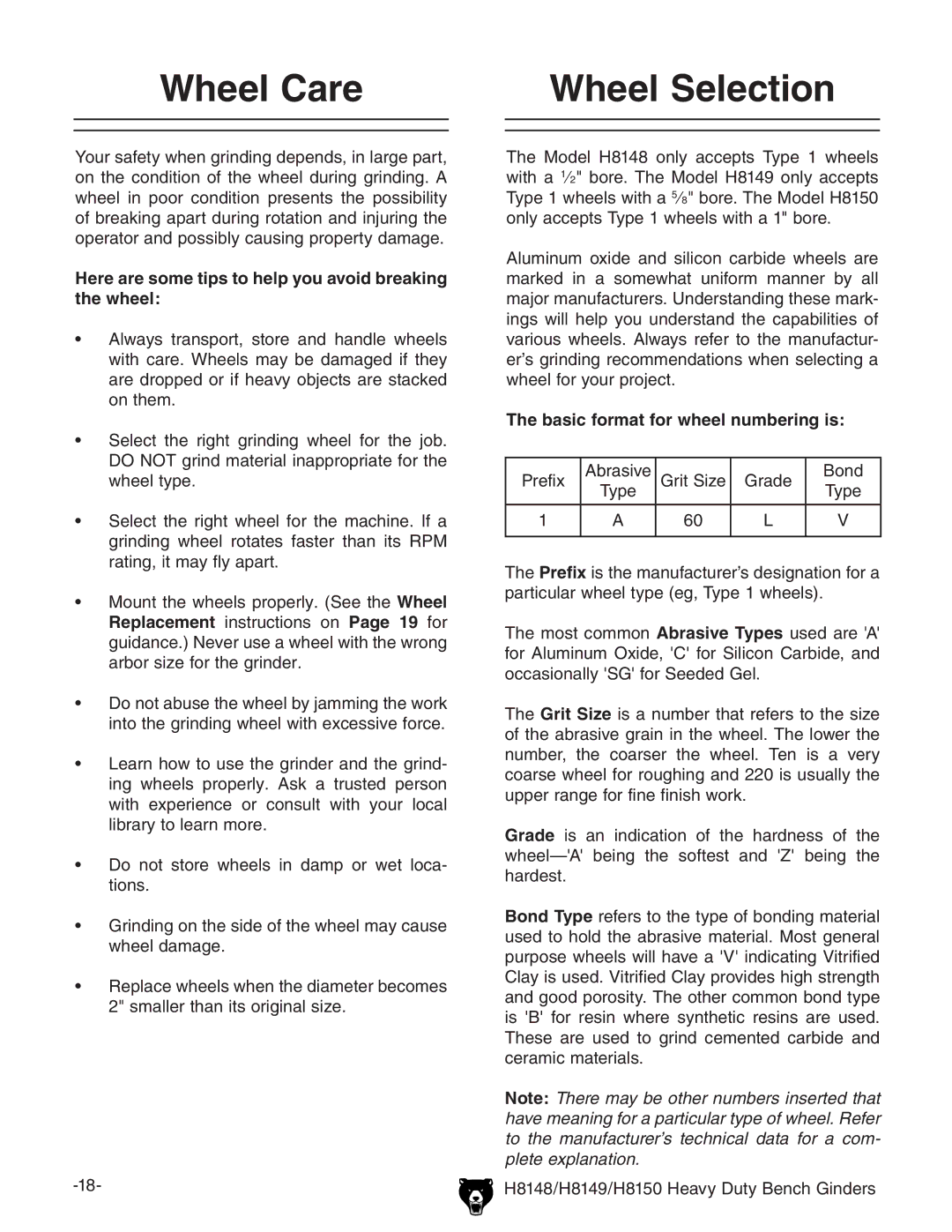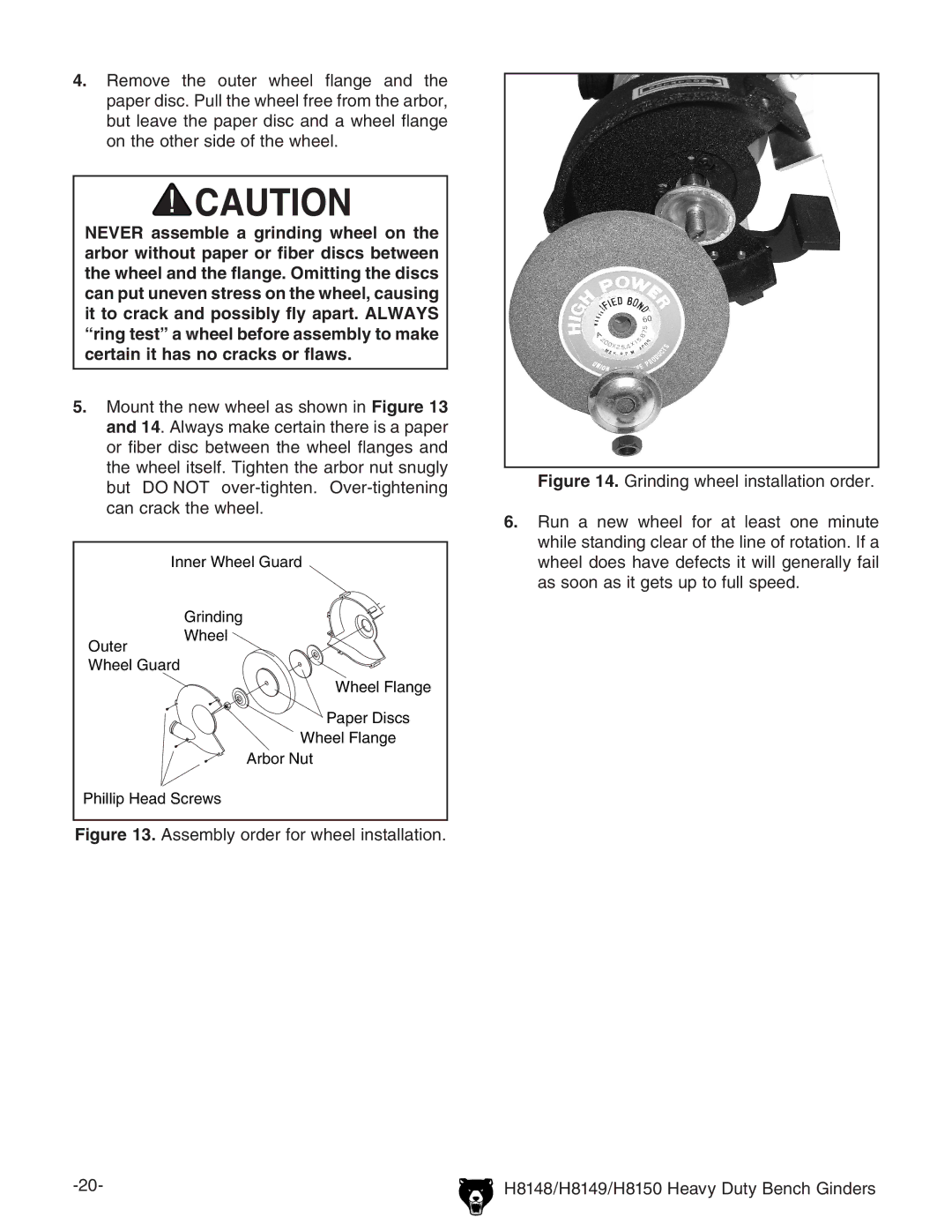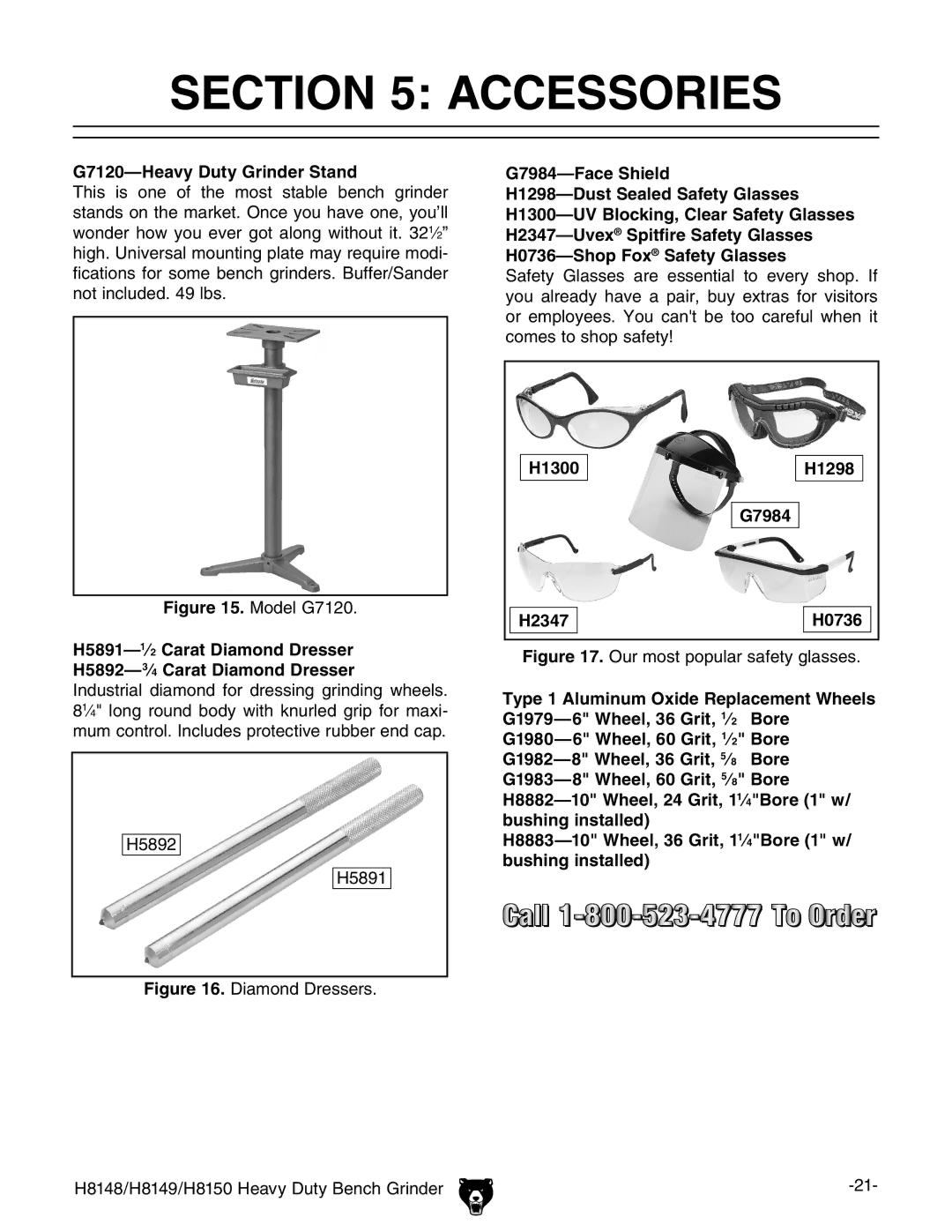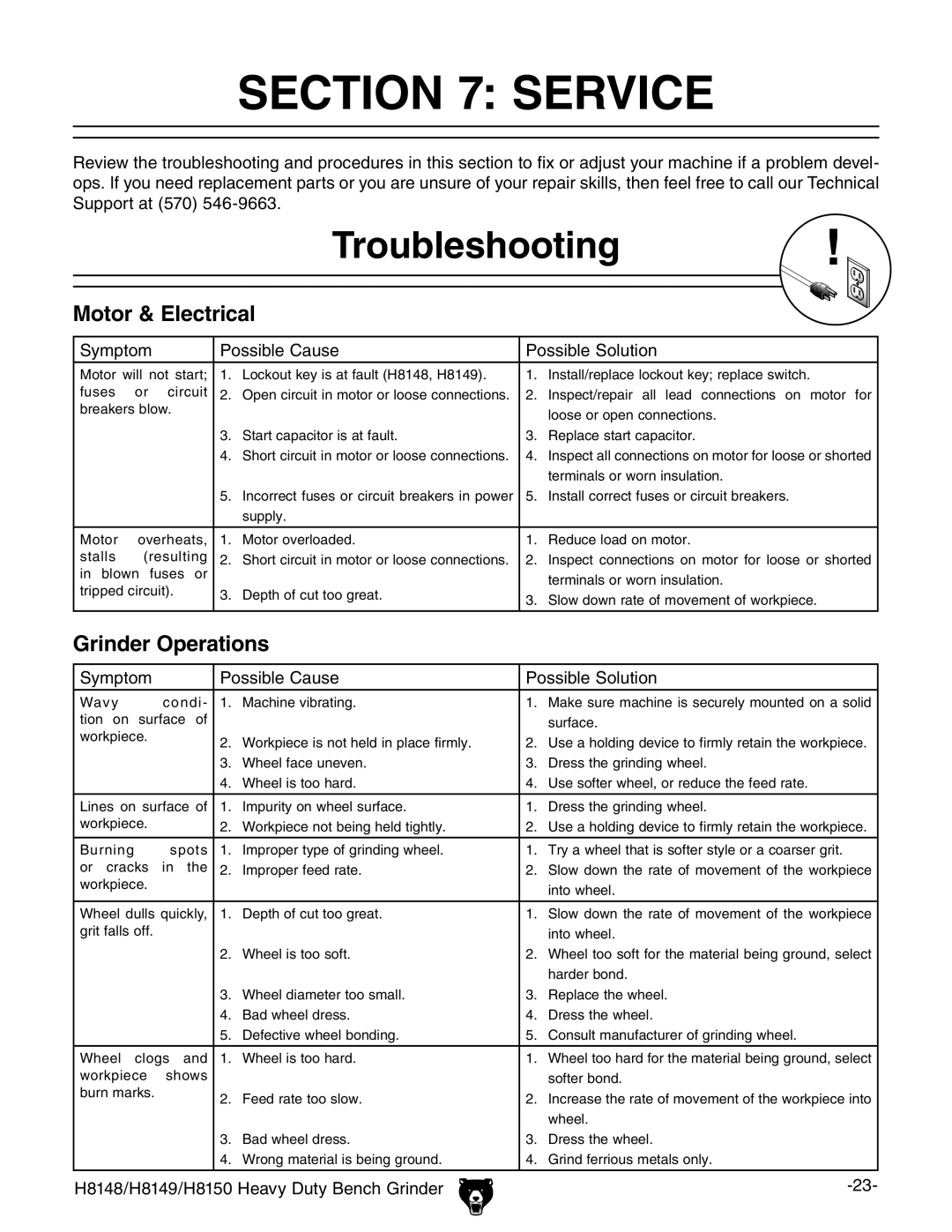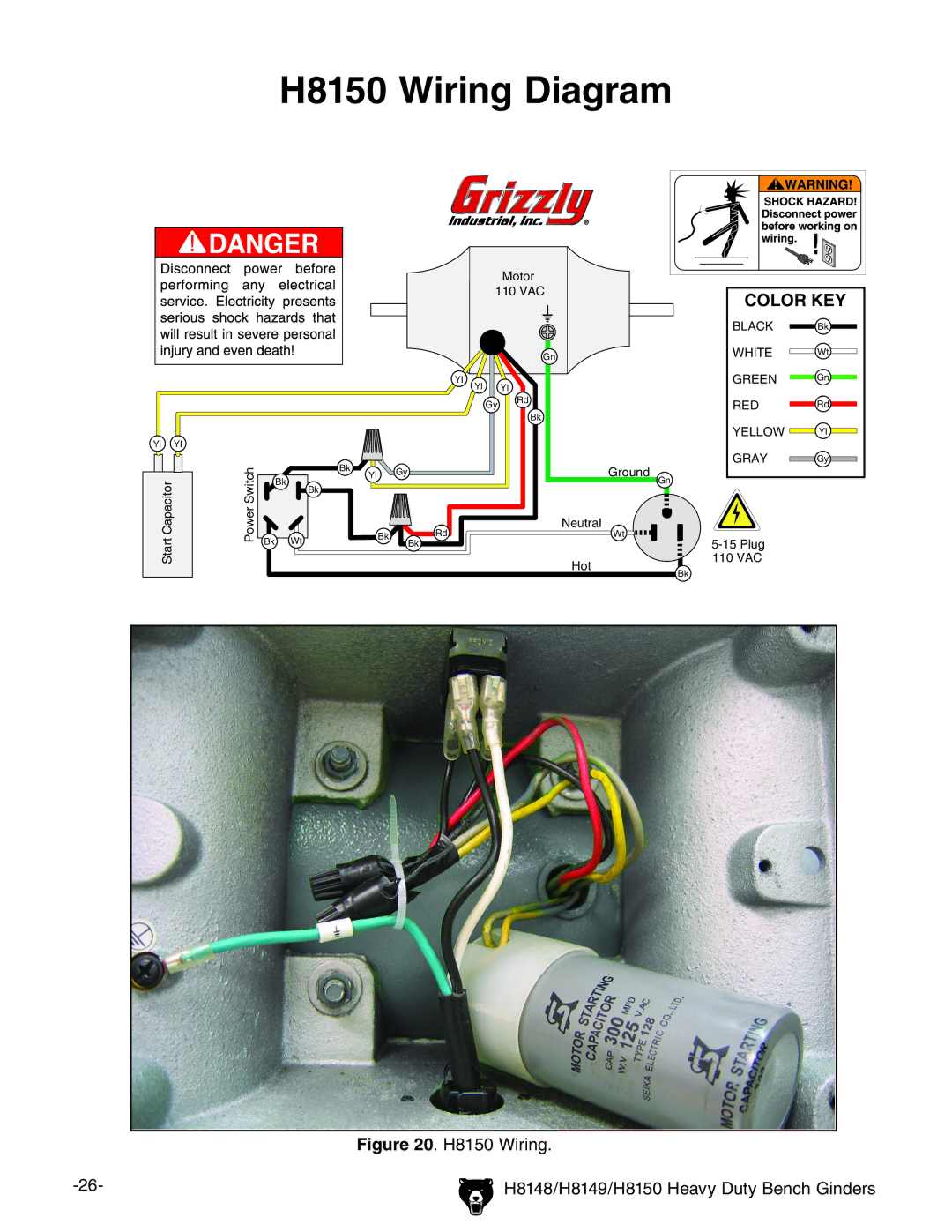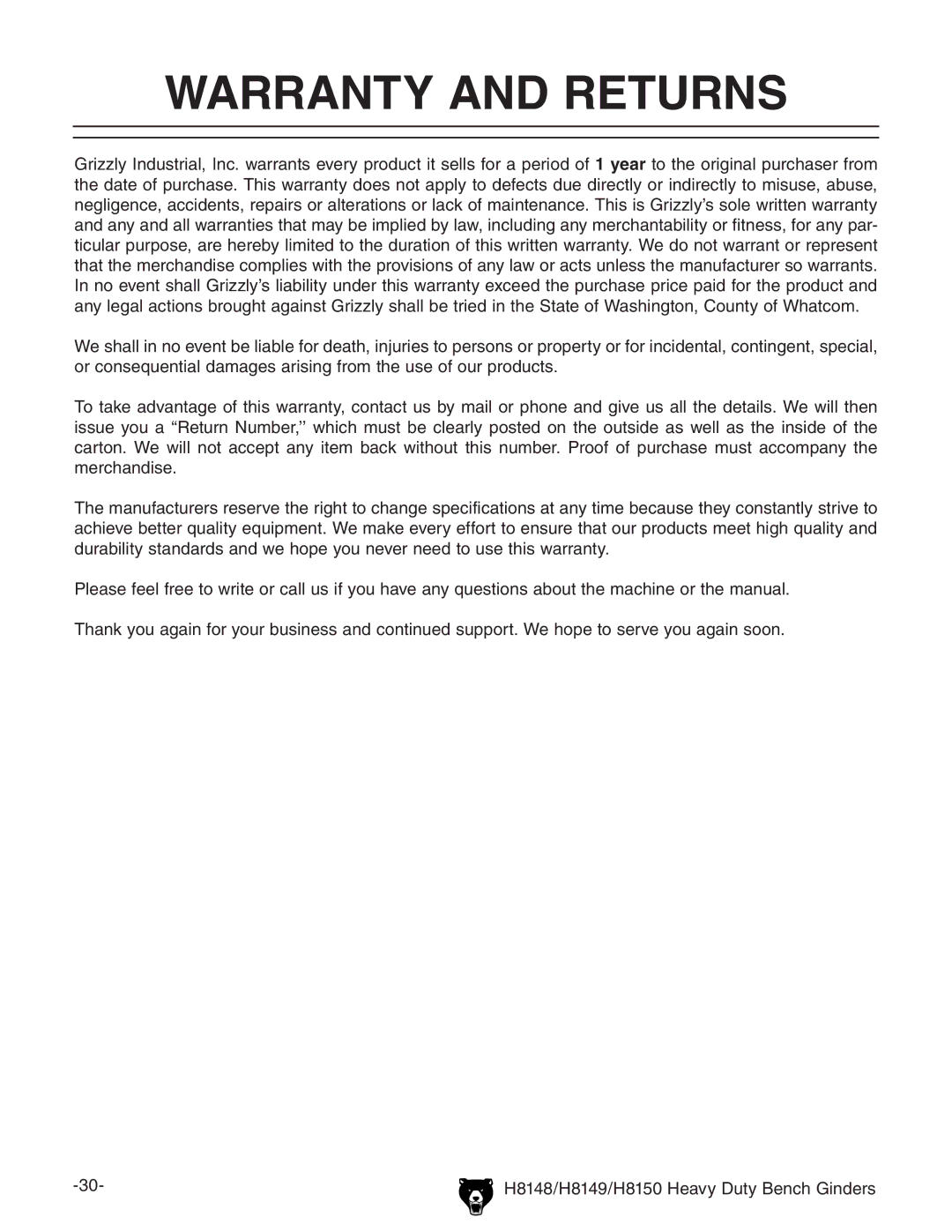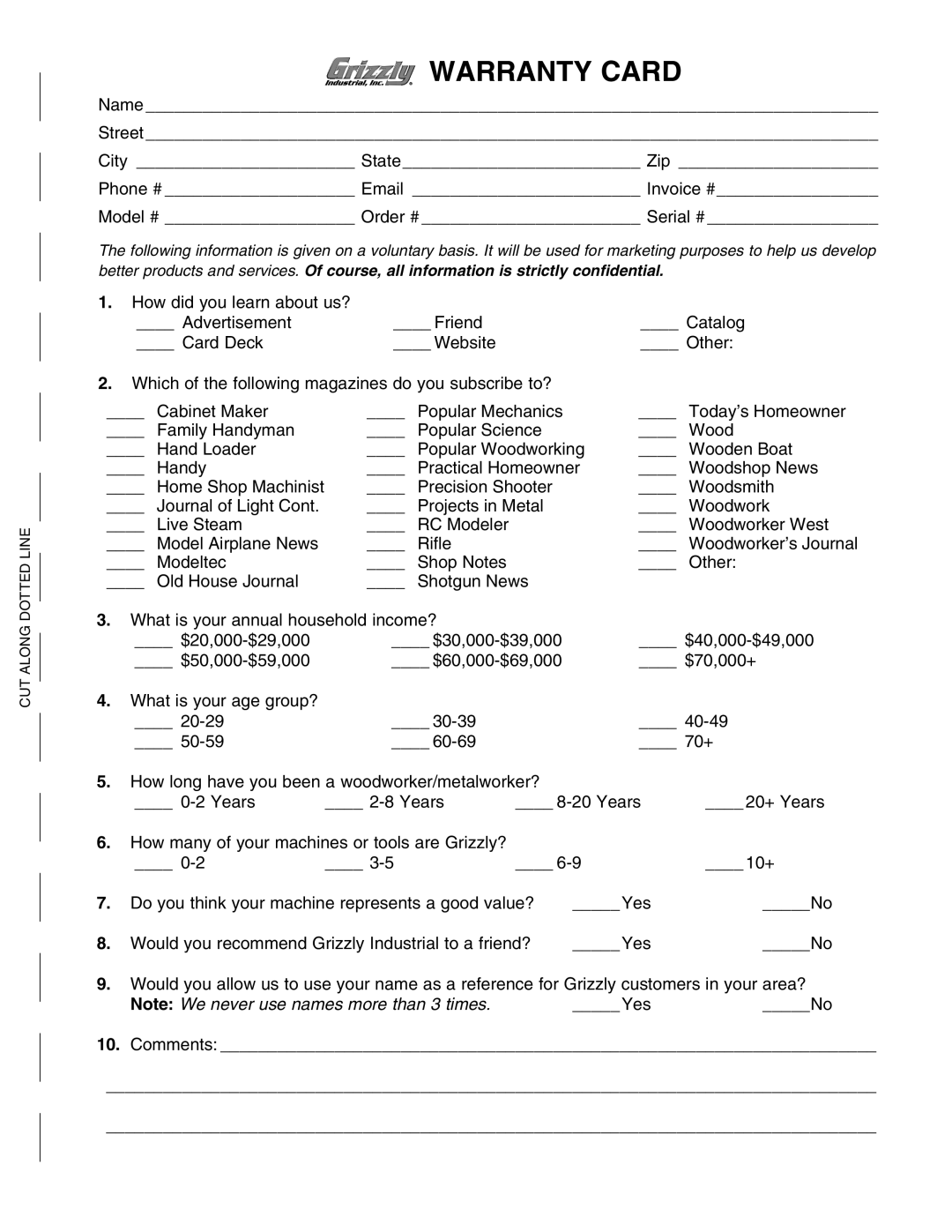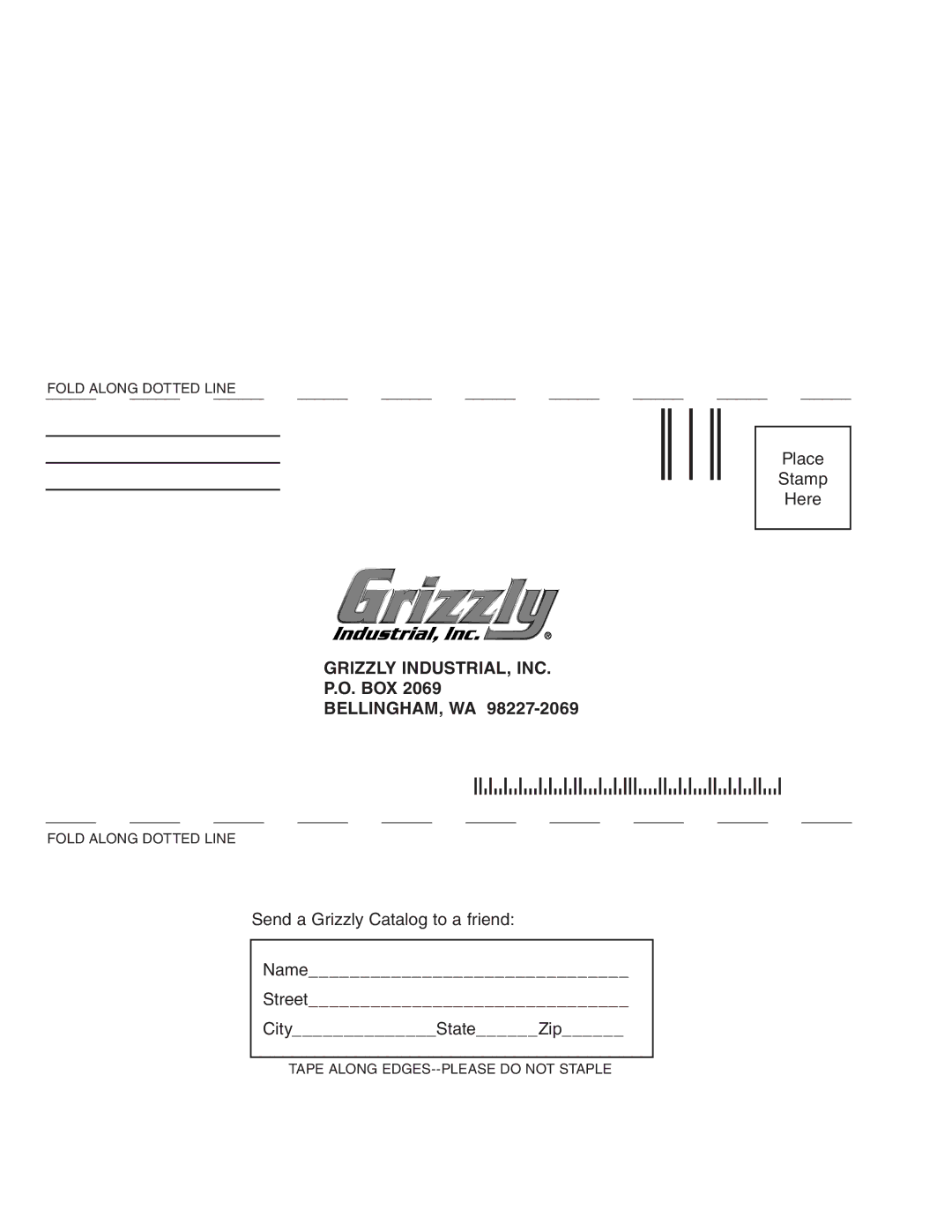
SECTION 7: SERVICE
Review the troubleshooting and procedures in this section to fix or adjust your machine if a problem devel- ops. If you need replacement parts or you are unsure of your repair skills, then feel free to call our Technical Support at (570)
Troubleshooting
Motor & Electrical
Symptom | Possible Cause | Possible Solution | |||||
|
|
|
|
| |||
Motor will not start; | 1. | Lockout key is at fault (H8148, H8149). | 1. | Install/replace lockout key; replace switch. | |||
fuses | or | circuit | 2. | Open circuit in motor or loose connections. | 2. | Inspect/repair all lead connections on motor for | |
breakers blow. |
|
|
| loose or open connections. | |||
|
|
|
|
|
| ||
|
|
| 3. | Start capacitor is at fault. | 3. | Replace start capacitor. | |
|
|
| 4. | Short circuit in motor or loose connections. | 4. | Inspect all connections on motor for loose or shorted | |
|
|
|
|
|
| terminals or worn insulation. | |
|
|
| 5. | Incorrect fuses or circuit breakers in power | 5. | Install correct fuses or circuit breakers. | |
|
|
|
| supply. |
|
| |
|
|
|
|
|
| ||
Motor | overheats, | 1. | Motor overloaded. | 1. | Reduce load on motor. | ||
stalls | (resulting | 2. | Short circuit in motor or loose connections. | 2. | Inspect connections on motor for loose or shorted | ||
in blown | fuses or |
|
|
| terminals or worn insulation. | ||
tripped circuit). | 3. | Depth of cut too great. |
| ||||
3. | Slow down rate of movement of workpiece. | ||||||
|
|
| |||||
|
|
|
|
| |||
|
|
|
|
|
|
| |
Grinder Operations
Symptom |
|
| Possible Cause | Possible Solution | |||
|
|
|
|
|
|
| |
Wavy |
| condi- | 1. | Machine vibrating. | 1. | Make sure machine is securely mounted on a solid | |
tion on | surface of |
|
|
| surface. | ||
workpiece. |
|
| 2. | Workpiece is not held in place firmly. | 2. | Use a holding device to firmly retain the workpiece. | |
|
|
|
| ||||
|
|
|
| 3. | Wheel face uneven. | 3. | Dress the grinding wheel. |
|
|
|
| 4. | Wheel is too hard. | 4. | Use softer wheel, or reduce the feed rate. |
|
|
|
|
| |||
Lines on surface of | 1. | Impurity on wheel surface. | 1. | Dress the grinding wheel. | |||
workpiece. |
|
| 2. | Workpiece not being held tightly. | 2. | Use a holding device to firmly retain the workpiece. | |
|
|
|
|
|
|
| |
Burning |
| spots | 1. | Improper type of grinding wheel. | 1. | Try a wheel that is softer style or a coarser grit. | |
or cracks | in | the | 2. | Improper feed rate. | 2. | Slow down the rate of movement of the workpiece | |
workpiece. |
|
|
|
|
| into wheel. | |
|
|
|
|
|
|
| |
|
|
|
|
| |||
Wheel dulls quickly, | 1. | Depth of cut too great. | 1. | Slow down the rate of movement of the workpiece | |||
grit falls off. |
|
|
|
|
| into wheel. | |
|
|
|
| 2. | Wheel is too soft. | 2. | Wheel too soft for the material being ground, select |
|
|
|
|
|
|
| harder bond. |
|
|
|
| 3. | Wheel diameter too small. | 3. | Replace the wheel. |
|
|
|
| 4. | Bad wheel dress. | 4. | Dress the wheel. |
|
|
|
| 5. | Defective wheel bonding. | 5. | Consult manufacturer of grinding wheel. |
|
|
|
|
|
|
| |
Wheel | clogs | and | 1. | Wheel is too hard. | 1. | Wheel too hard for the material being ground, select | |
workpiece | shows |
|
|
| softer bond. | ||
burn marks. |
|
| 2. | Feed rate too slow. | 2. | Increase the rate of movement of the workpiece into | |
|
|
|
| ||||
|
|
|
|
|
|
| wheel. |
|
|
|
| 3. | Bad wheel dress. | 3. | Dress the wheel. |
|
|
|
| 4. | Wrong material is being ground. | 4. | Grind ferrious metals only. |
|
|
|
| ||||
H8148/H8149/H8150 Heavy Duty Bench Grinder |
| ||||||







